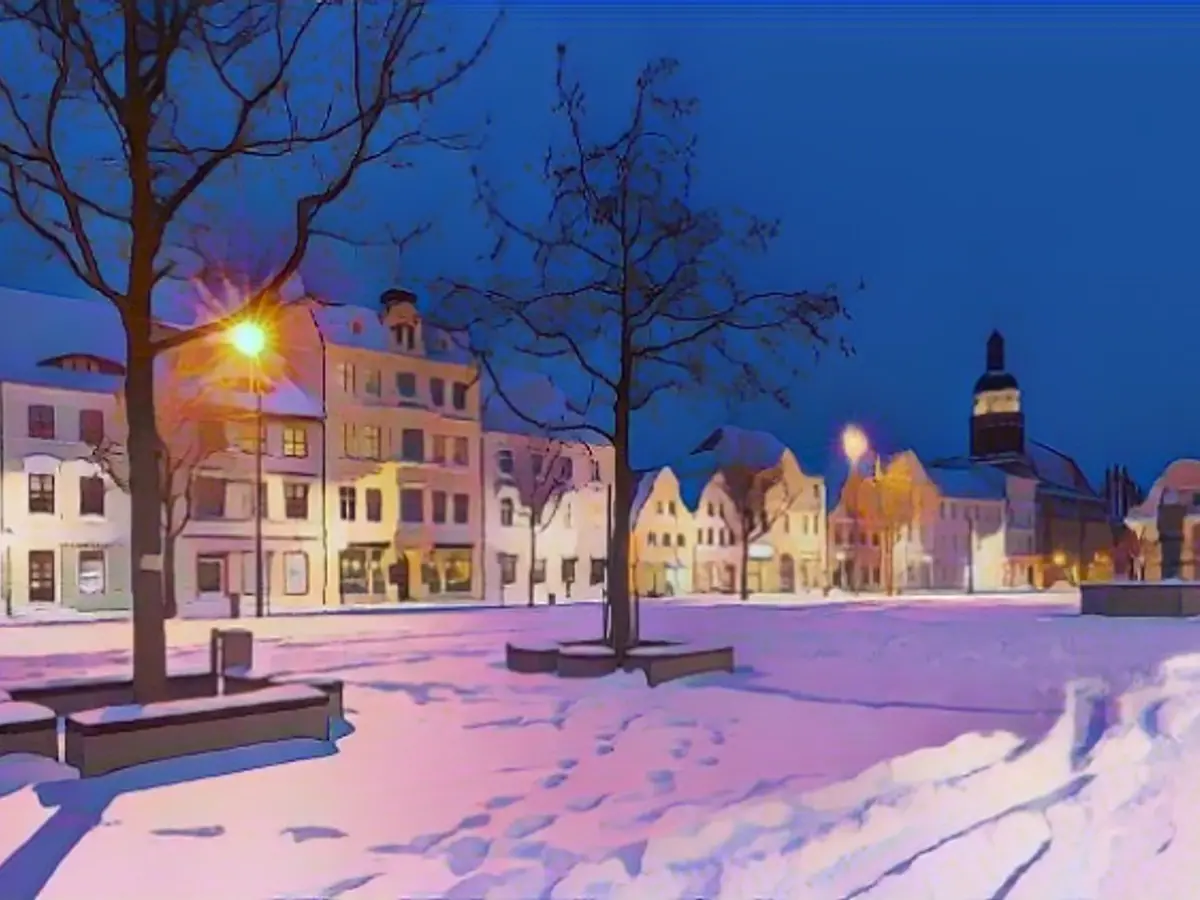White Christmases are becoming increasingly rare
Postcards and movies cannot do without snow at Christmas time. In reality for most Germans, however, the two events rarely fall on the same date, as an analysis of the data shows. Due to climate change, the chances of a white Christmas are shrinking all the time.
Although holidays in snow flurries are more likely to be remembered, white Christmases are the exception rather than the rule, at least across the country. This is confirmed by historical weather data from the German Weather Service (DWD).
A direct comparison of the station data makes it clear that the prospects of holiday snow have always been very unevenly distributed in Germany. Winter brings a fairly reliable blanket of snow to the higher regions - in the low mountain ranges or near the Alps, for example - which can also hold its own at Christmas. Below 700 meters, however, the probability of snow on time for Christmas Eve drops significantly.
There are several weather stations, particularly in the north and west of Germany, where it only snowed every ten years or less between 1950 and 2022. On Norderney, for example, a snow cover of at least one centimetre on Christmas Eve was recorded only seven times in the 72 years for which precipitation values are available. The situation is similar in Bad-Ahrweiler in Rhineland-Palatinate. There has only been snow for Christmas eight times since 1950.
In most regions of Germany, people have been able to enjoy a snowy Christmas about every four to five years in the past. Of the 532 measuring stations for which sufficient data is available, around 120 fall into this middle range.
Hardly a high snow guarantee
In contrast, there are ski and mountain regions such as Philippsreut in Bavaria, the Fichtelberg in Saxony, the Brocken in Saxony-Anhalt and the Feldberg in Baden-Württemberg. There, the chances of a white Christmas are over 90 percent. In Germany, only the measuring station on the Zugspitze at an altitude of over 2900 meters reaches the 100 percent mark.
Overall, the number of regions with a comparatively high snow guarantee on Christmas Eve is literally melting away. In the meteorologically relevant reference period from 1961 to 1990, for example, it snowed at almost 120 stations at least every other Christmas. In the last 30 years (1993-2022), this only applied to 65 stations.
In the last decade in particular, winters were too mild in many places. More than half of the stations have not seen a single White Christmas since the snowy winter season of 2010/2011. In the same period, popular ski regions such as Garmisch-Partenkirchen have seen an increase in years in which the slopes have remained green. Nevertheless, this year the prospects for snowy holidays are better than they have been for a long time.
Ski regions are increasingly suffering from a lack of snow
But what about outside the Christmas period? Is the lack of snow generally increasing in Germany? Looking at a single date over 30 or 73 years is not enough to identify a clear trend.
However, the observations at Christmas are in fact consistent with the DWD's findings for the whole year. For example, the German Weather Service had already established in 2022 that snow days have become increasingly rare since 1961. The trend is most noticeable at medium altitudes (up to 700 meters) and in the area (300 to 700 meters). There, the average number of days on which a snow cover of at least 3 centimetres was measured has decreased by 50 or 65 percent per station and year.
In the mountains (above 700 meters), a moderate decrease in snow days of 30 percent can also be observed. However, the lack of snowfall is likely to be particularly sorely missed in these regions - not only by the locals, but also by tourists and those who live from winter sports. On the coast, in the Rhine Valley and in the lowlands, on the other hand, disappointment will probably be limited if there is no White Christmas this year after all. After all, people there hardly know any different.
The methodology
The evaluation is based on the historical precipitation data in the German Weather Service's station network from 1950 to 2022. The decisive factor in each case was the snow depth measured at the individual stations on 24.12. (Christmas Eve). The chance of a White Christmas at the location results from the number of years in which a snow depth of at least 1 cm was recorded on Christmas Eve in relation to the total number of years in the respective period for which a measured value is available. Stations with too many missing values (more than three years without a measured value in the relevant periods from 1961 to 1990 and 1993 to 2022) were excluded from the analysis.
Read also:
- This will change in December
- German activists speak out in Dubai on suffering in Israel and the Gaza Strip
- Despite UN vote: fighting between Israel and Hamas in the Gaza Strip continues
- Nuclear fusion - hype or solution to energy problems?
Despite the charm of postcards and movies depicting a snowy Christmas, education days often coincide with warmer weather due to climate change. In fact, ski regions are increasingly suffering from a lack of snow, affecting those who rely on winter sports for income or enjoyment.
Source: www.ntv.de







